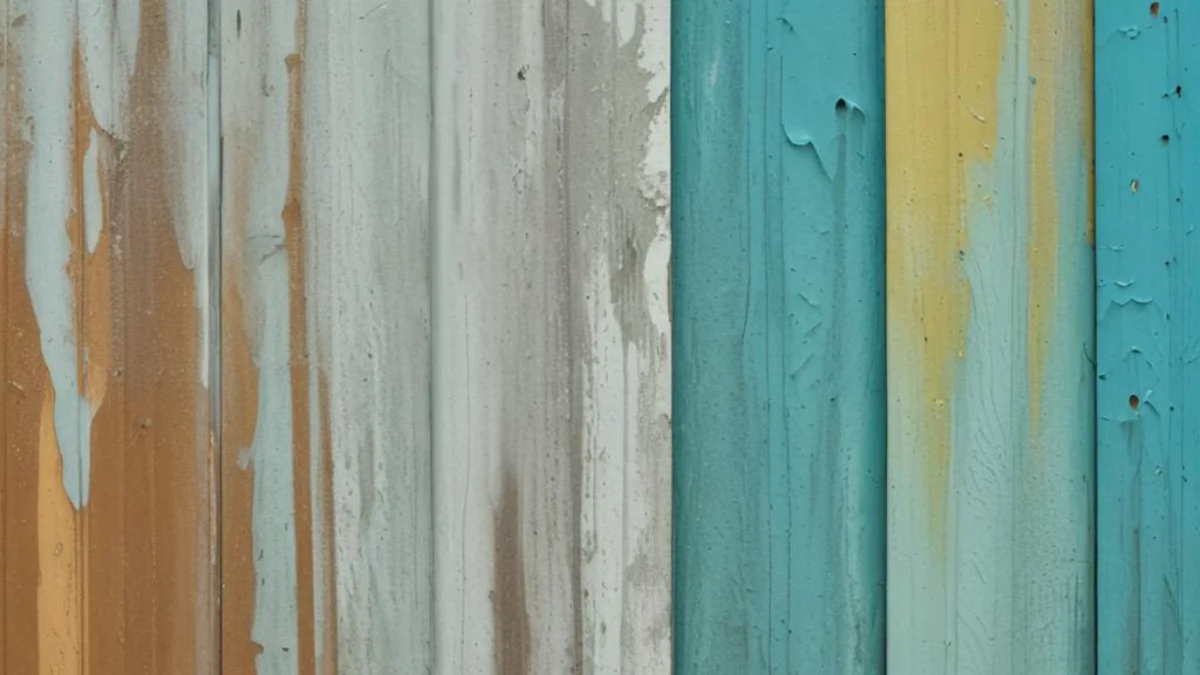How to Clean Masonite Siding: Unlock Your Home’s True Shine
Is your home’s exterior looking dull, dingy, or plagued by green and black streaks? You’re not alone. Many homeowners with Masonite siding face the challenge of keeping it clean and pristine. This composite wood fiber product, while popular for its wood-like appearance, has a notorious weakness: moisture.
Understanding this vulnerability is the key to cleaning it effectively without causing irreversible damage. Neglecting your Masonite siding can lead to more than just an unsightly appearance; it can result in swelling, warping, and even rot.
You'll Learn About
The Core Problem: Why Masonite Siding Gets So Dirty
Masonite, also known as hardboard siding, is created from wood fibers, wax, and resins pressed together under heat. This composition makes it highly susceptible to moisture absorption if the protective paint layer is compromised. Once moisture gets in, it creates a welcoming environment for mold, mildew, and algae to thrive.
These organic growths are the primary culprits behind the green, black, and sometimes fuzzy stains you see. Beyond organic growth, everyday dirt, dust, and pollen can accumulate, creating a grimy film that diminishes your home’s curb appeal.
Identifying the Enemy: Dirt, Mold, or Mildew?
Before you begin cleaning, it’s crucial to know what you’re up against. Simple dirt and dust will typically wash away with mild soap and water. However, mold and mildew require a more targeted approach to kill the spores and prevent regrowth.
Mold often appears as black or green patches and can have a fuzzy or slimy texture. Mildew is typically a powdery, grayish-white substance. Both thrive in damp, shaded areas, so pay close attention to the north side of your house and areas under eaves or behind shrubbery.
The Gentle Approach: How to Safely Clean Your Siding
Because of its sensitivity to moisture, aggressive cleaning methods are the enemy of Masonite siding. High-pressure washing, for instance, can easily force water behind the panels, leading to swelling, bubbling, and long-term decay. A gentle, methodical approach is always the best course of action.
Follow these detailed steps to restore your siding’s beauty without causing harm. This process is effective for general grime as well as mild to moderate mildew growth.
Step 1: Gather Your Tools and Materials
Having everything ready before you start will make the process smoother and more efficient. You won’t need heavy-duty equipment, just some basic cleaning supplies.
- Soft-bristle brush (a car wash brush with a long handle works perfectly)
- Garden hose with a spray nozzle
- Bucket
- Mild detergent (dish soap is a good option)
- Oxygen bleach for stubborn mildew (optional but recommended)
- White vinegar (for a natural anti-mildew solution)
- Protective gear: gloves and safety glasses
Before you begin, it’s wise to protect nearby plants and shrubs by covering them with plastic sheeting. Some cleaning solutions, even mild ones, can be harmful to vegetation.
Step 2: Start with a Gentle Rinse
Begin by rinsing a section of the siding with your garden hose. Use a low to medium pressure setting to wash away loose dirt, cobwebs, and debris. Always spray the water at a downward angle to prevent it from getting behind the siding panels.
Working in manageable sections, about 10×10 feet at a time, ensures that the cleaning solution won’t dry on the surface before you have a chance to rinse it off.

Step 3: Mix Your Cleaning Solution
For general dirt and grime, a simple solution of mild detergent and warm water is sufficient. In your bucket, mix about a gallon of warm water with a quarter cup of dish soap.
If you’re dealing with mold or mildew, you’ll need something stronger. A great option is an oxygen bleach solution, which is less harsh than chlorine bleach. Mix according to the product’s directions. Alternatively, a solution of one part white vinegar to four parts water can be effective against mildew.
Step 4: The Gentle Scrub
Dip your soft-bristle brush into the cleaning solution and gently scrub the siding. Start from the bottom and work your way up to prevent streaks. This technique ensures that the dirty runoff from higher sections doesn’t create difficult-to-remove stains on the clean areas below.
Apply just enough pressure to lift the grime without being abrasive. Remember, the goal is to clean, not to strip the paint. For homeowners struggling with stubborn buildup, patience during this stage is key. Don’t be tempted to grab a wire brush, as this can severely scratch and damage the siding’s surface.
Step 5: Rinse Thoroughly and Let Dry
Once you’ve scrubbed a section, rinse it thoroughly with the garden hose, this time working from the top down. This ensures all soap residue and loosened grime are completely washed away. Leaving soap residue can attract more dirt over time.
Allow the siding to air dry completely. On a sunny, breezy day, this shouldn’t take long. Inspect the cleaned section to see if any stubborn spots remain. If so, you can repeat the scrubbing process on those specific areas.
Tackling Tough Stains and Persistent Mildew
Sometimes, a gentle wash isn’t enough to remove years of built-up grime or a stubborn mildew infestation. In these cases, you may need to adjust your cleaning solution. A more concentrated mixture of oxygen bleach or a store-bought siding cleaner specifically formulated for wood composites can be effective.
For particularly tough mildew spots, you can create a paste with oxygen bleach and a small amount of water. Apply it directly to the stain, let it sit for about 10-15 minutes, then gently scrub and rinse away. Always test any new cleaning solution on a small, inconspicuous area first to ensure it doesn’t cause discoloration.
The Pressure Washer Debate: A Word of Caution
While many online forums discuss using a pressure washer, it’s a risky proposition for Masonite. Most experts and manufacturers advise against it due to the high potential for damage. The intense pressure can easily gouge the soft wood composite and force water into seams, leading to disastrous consequences.
If you absolutely must use a pressure washer, it should be on the lowest possible pressure setting (under 1500 PSI). Use a wide-angle fan tip (40-degree or wider) and keep the nozzle at least two to three feet away from the siding at all times. If your pressure washer hose keeps bursting, it might be a sign the pressure is set too high for this delicate job. Never spray directly at seams or joints, and always maintain a downward angle. Soft washing, a very low-pressure technique, is a much safer alternative if available.
Comparing Cleaning Solutions for Masonite Siding
Choosing the right cleaning agent is critical for both effectiveness and safety. Here’s a breakdown of common options to help you decide what’s best for your home.
| Cleaning Solution | Best For | Pros | Cons |
|---|---|---|---|
| Mild Soap and Water | General dirt, dust, pollen | Gentle, safe for plants, inexpensive | Ineffective against mold and mildew |
| White Vinegar Solution | Mildew and light mold | Natural, eco-friendly, kills mildew spores | Strong odor, may not remove deep stains |
| Oxygen Bleach Solution | Moderate mold and mildew, algae | Effective stain remover, safer for plants than chlorine bleach | Slightly more expensive, requires careful mixing |
| Commercial Siding Cleaner | Heavy stains, widespread organic growth | Formulated for siding, highly effective | Can be expensive, may contain harsh chemicals |
Maintenance is Key: Preventing Future Buildup
Once your siding is clean, the work isn’t over. Regular maintenance is the best way to prevent dirt and mildew from returning. A yearly cleaning using the gentle methods described above should be part of your home maintenance routine.
Inspect your siding regularly for any chipped paint or failing caulk around windows and doors. Keeping the siding well-sealed is the most important step in preventing moisture damage. Trim back any shrubs or tree branches that are too close to the house to improve air circulation and allow sunlight to reach the siding, which naturally inhibits mildew growth.
Maintaining a clean exterior enhances your home’s curb appeal and protects your investment. While Masonite requires a gentle touch, a little bit of effort goes a long way. This proactive approach can help you avoid more significant problems, like needing to figure out how to make tile countertops smooth after a water leak from damaged siding. Similarly, keeping your exterior clean can prevent stubborn stains, much like knowing how to get purple shampoo stains out of the shower saves your interior surfaces.
By following these guidelines, you can safely and effectively clean your Masonite siding, restoring its original beauty and extending its lifespan for years to come.

